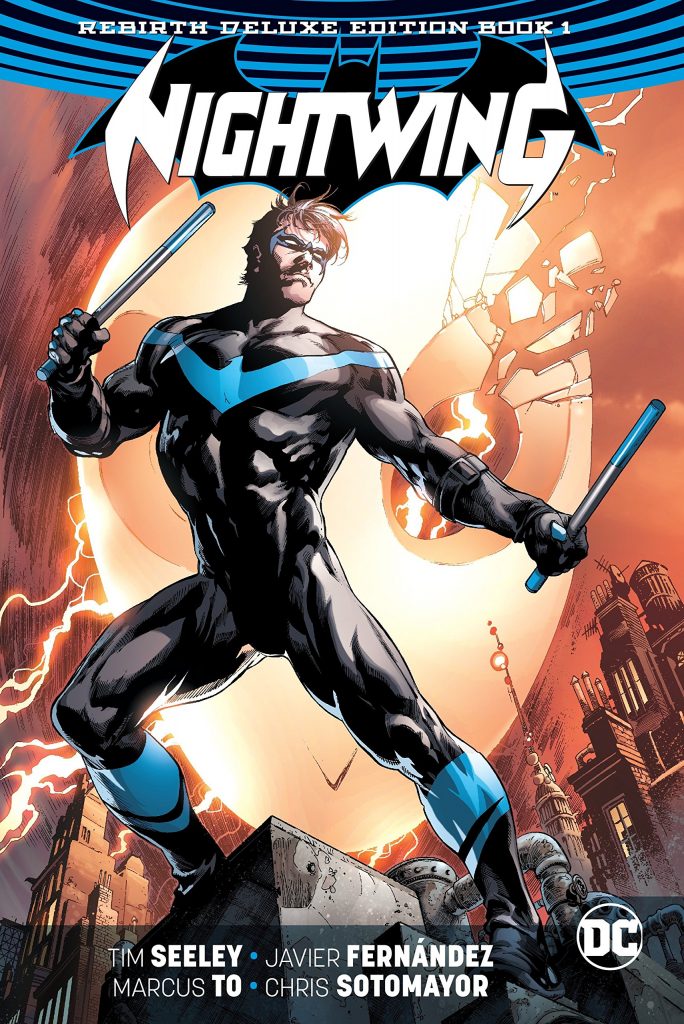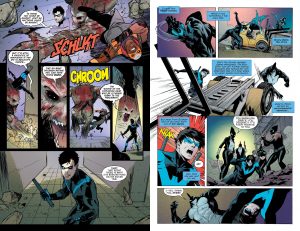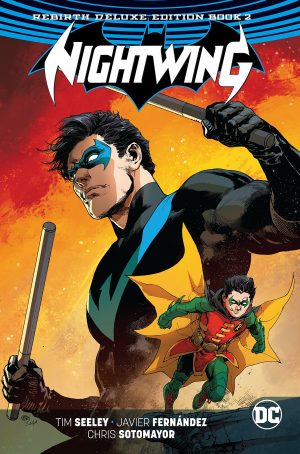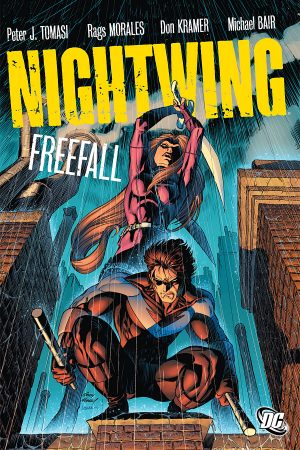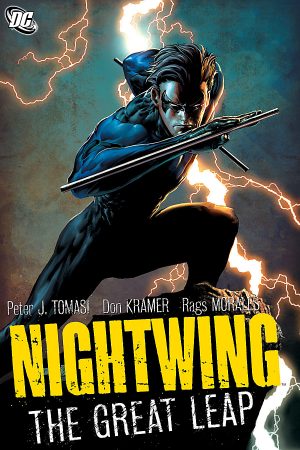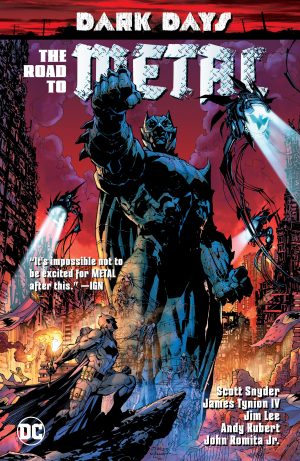Review by Frank Plowright
Tim Seeley’s run on Nightwing continued from his co-writing the preceding Grayson series. Seeley wasn’t greatly acclaimed, and the schizoid pairing of the first two graphic novels in hardcover shows why. An opening story of connected single chapters is followed by the greater structure of a more conventional superhero effort.
The primary artists are as different as the material they draw, although there’s an argument to be made that Javier Fernández and his gritty style would have been better allocated to the ‘Back to Blüdhaven’ arc. Conversely Marcus To’s cleaner style would prove a better fit for the opener. Fernández has an eye for a striking single image and nice way with silhouettes, but he’s poor at any expression that’s not gritted teeth, and as such unconvincing when it comes to the emotional content. To handles that better, also giving greater definition to important supporting character Shawn Tsang. Yanick Paquette, Marcio Takara and Minkyu Yung fill in for a chapter each, and Paquette sets a high standard over the opening story not matched afterwards.
To Seeley’s credit, rather than relying on the past, he creates a new supporting cast for Nightwing. A group of continuity implant minor villains who’ve moved from Gotham to Blüdhaven are introduced in the book’s second half, while Raptor features heavily in the opening story. He wasn’t universally well received, and it’s hardly an unfair comment to note that he almost usurps Dick Grayson in his own title. He is thoughtfully constructed, however, and certainly better than the visual design makes him look. He’s an athletic match for Nightwing, and has intriguing connections to his past. What doesn’t work is Raptor’s obsession with brand establishment, which wears thin very quickly, and Seeley stretching coincidence too often. Once might pass by, but it’s on several occasions.
This doesn’t happen in the better second story, where after a pep talk from Superman, Seeley has Dick move to Blüdhaven, the city in which his most acclaimed earlier adventures took place. It continues Dick’s contemplation regarding a separate identity that distances him slightly from Batman. This theme of independence runs through the entire book. Is Dick too constrained by Batman’s methods when he’d be better off taking a more individual approach to protecting the community? For all the airing this receives, there is no real conclusion, as it’s just a means for Seeley to prod Dick into certain directions and actions. The move introduces Shawn Tsang, who’ll come to play a large role in the continuing series.
For the sake of completeness this also includes two chapters not included in the paperback collections because they tied into the Batman crossover Night of the Monster Men. Without the remainder of the story as context, they’re difficult to follow, constantly jumping between characters and taking a great leap between one chapter and the next. Giant monsters are attacking Gotham, and in collaboration with Steve Orlando, Seeley and Rogê Antônio prod the desperate main story forward. Are giant monsters a match for Batman and Nightwing’s skill set editorially? Possibly not.
Qualms about the story quality notwithstanding, at a cover price of $35 there’s no quibbling about value for money when compared with the price of the sixteen original comics or even the two paperback trades Better Than Batman and Back to Blüdhaven.
